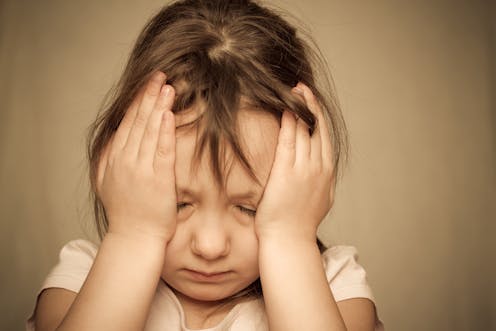Children have strokes too and doctors often miss them. New guidelines will help
- Written by Tanya Medley, Honorary Senior Fellow, Department of Paediatrics at The University of Melbourne and Senior Researcher, Murdoch Childrens Research Institute

The country’s first guidelines to improve doctors’ ability to diagnose and manage stroke in children have been released today. Stroke is among the top ten causes of death in childhood and more than half of childhood stroke survivors have long-term disabilities. These may include seizures, physical disability, speech or learning difficulties.
There are good systems in place to rapidly identify and treat stroke in adults. In contrast, children often wait more than a day for stroke diagnosis. As a consequence, they may miss the time window for life-changing interventions to minimise brain injury by restoring blood flow to the brain.
Funded by the Ian Potter Foundation, and endorsed by the Stroke Foundation and the Australian and New Zealand Child Neurology Society, the guidelines give treating doctors clear steps on how to speed up diagnosis to minimise brain injury and improve recovery.
Causes and symptoms
There are two main types of strokes. A blood clot or bit of plaque that blocks a blood vessel in the brain is called an ischaemic stroke. When a blood vessel in the brain breaks or ruptures, this is called an haemorrhagic stroke. Children can experience both types of stroke, but haemorrhagic strokes are more common.
Read more: How to recognise a stroke and what you need to know about their treatment
Our databases indicate around 300 babies and children are diagnosed with a stroke in Australia each year. One quarter of all strokes occur in newborns, a third in children under one, and half in children less than five years old.
The causes of stroke in children differ to those in adults. Almost half of children who suffer a stroke are found to have blood vessel abnormalities in the brain. Another quarter have congenital heart defects (a hole in the heart), and for some the cause remains unknown.
Some symptoms of stroke in children are the same as in adults. These can include face, arm or leg weakness, difficulty speaking and severe headache. Children are also more likely to experience seizures and loss of consciousness. If children have a sudden onset of face, arm or leg weakness, prolonged seizures or loss of consciousness, parents should call 000 immediately.
What’s in the guidelines?
Led by doctors at the Royal Children’s Hospital and the Murdoch Children’s Research Institute, including the authors, the guidelines outline a pathway of care for doctors assessing patients. This includes more than 60 evidence-based recommendations to assist emergency staff and paediatricians in diagnosing and managing children.
Key recommendations in the guidelines include how to recognise symptoms that require investigation for stroke, such as face and limb weakness, altered headache, prolonged seizures and loss of consciousness.
The guidelines also note the importance of urgent MRI using child-specific imaging techniques for an accurate diagnosis. This will also help identify children who require emergency treatment, such as medications to dissolve clots and surgery.
Read more: Childhood heart disease has a profound impact and is under-recognised
We know that adults treated in hospitals by teams of health professionals with stroke expertise do better. There is every reason to believe that applying the same coordinated approach to children will also improve outcomes. The guidelines recommend elements of service necessary for hospitals to qualify as primary paediatric stroke centres.
Implementing a standardised approach to diagnosis and management will ensure children are not being left behind in the advances in stroke care, that have transformed outcomes for adults.
The full guidelines will be soon published in the International Journal of Stroke.
Authors: Tanya Medley, Honorary Senior Fellow, Department of Paediatrics at The University of Melbourne and Senior Researcher, Murdoch Childrens Research Institute



